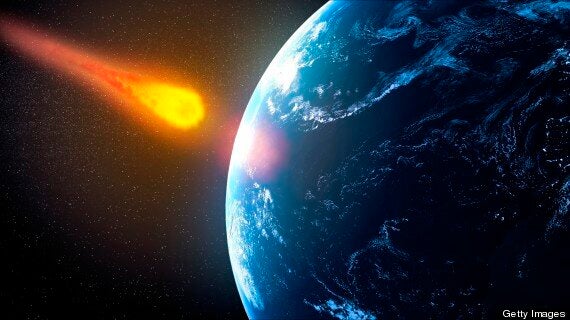Nasa has made a breakthrough in its quest for a reliable way to spot deadly asteroids before they cause harm on Earth.
A new camera sensor which can scan the sky for near-Earth objects has been tested in space conditions, and could soon be sent to watch for signs of our oncoming doom.
According to the NEOWISE mission, which scanned the entire sky for signs of dangerous bodies, there are more than 34,000 asteroids in the solar system with 134 being classed as "near Earth".

Which is why the development of a new infrared sensor, capable of detecting asteroids within 45 million kilometres of Earth, is so crucial.
The sensor has been built for the Near Earth Object Camera (NEOCam) space craft, the proposed mission which would park a space craft more than four times as far from the Earth as the Moon to hunt for asteroids capable of striking us.
The American space agency currently studies many of the asteroids which are larger than 140 metres wide and classed as 'civilisation killers'. But many remain unfound or not well understood, leading to proposals for the new mission, which would study two-thirds of all asteroids larger than 140 metres inside Earth's orbit.

Above: The Near-Earth Object Camera
Instead of looking for asteroids with visible light - which can result in small, light rocks being mistaken for large, dark ones - the new sensor looks for asteroids with infra-red light.
Ten years in the making, it is designed to be lighter, more reliable and higher in quality than previous sensors, and could be the difference between finding an asteroid in enough time to do something about it, or at least evacuate an area likely to be affected.
Now for the first time it's been tested in deep-space conditions, a "critical design test" that could see it being sent up on schedule.
Unfortunately the exact timing of the new launch isn't available, and hasn't yet been approved.
But given Nasa's new commitment to capturing an asteroid and bringing it close to Earth for study - and the new sensor's potentially vital role in that effort - it seems likely that it could happen sooner or later.
"This sensor represents one of many investments made by Nasa's Discovery Program and its Astrophysics Research and Analysis Program in innovative technologies to significantly improve future missions designed to protect Earth from potentially hazardous asteroids," said Lindley Johnson, program executive for the Near-Earth Object Program Office.
Nasa is also searching for ways to target asteroids with space craft, either to nudge it into a different orbit, land on it, "lasso" it for mining or otherwise just collide with one.
Unfortunately, a significant number of asteroids still remain undetected - especially those which - while relatively small - could still wipe out a large city.
And as for those similar to that which crashed into a Russian town earlier this year and injured about 1,000 people, it's still virtually impossible to track them before it's too late. According to Nasa chief Charles Bolden our best bet when it comes to avoiding asteroids is still - with tongue only partially in cheek - "prayer".